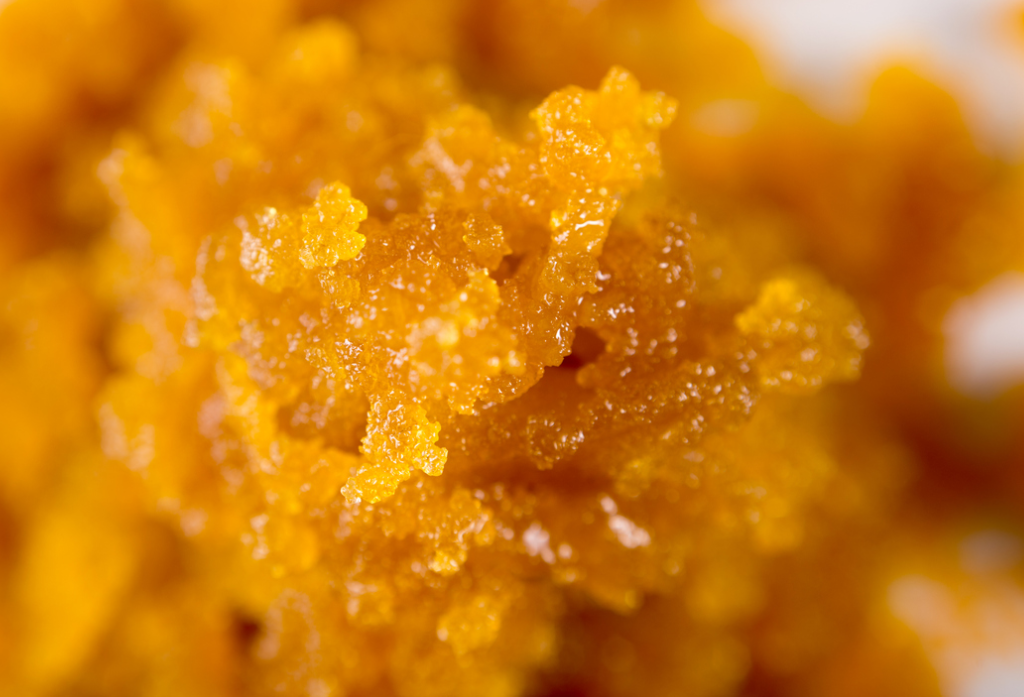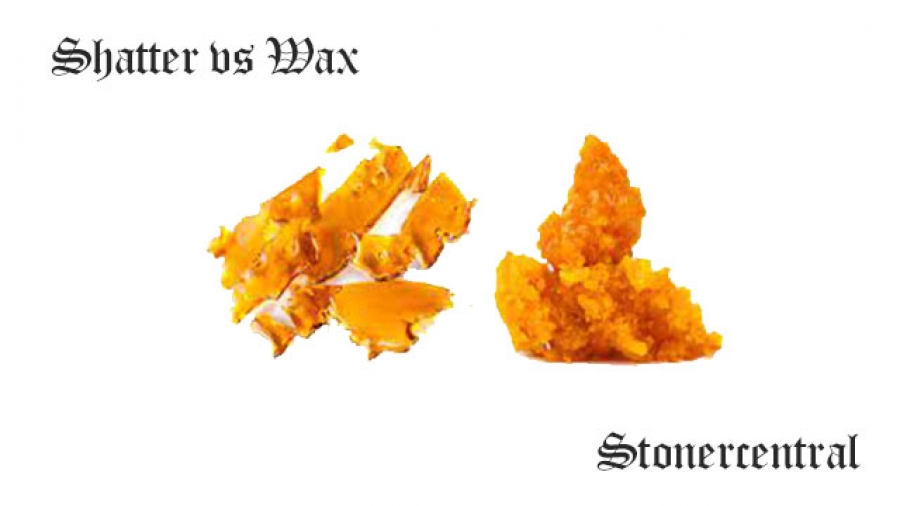Shatter and wax are both concentrates, but they have some key differences. Wax tends to be a little sweeter smelling than shatter because it doesn’t contain terpenes as shatter does. The consistency of shatter is also different than that of wax. Shatter has a much thicker consistency and will often stick to the side of a bowl or pipe whereas waxy oil can slide right out (which makes it easy for those who want to vape).
What is shatter?
Shatter is a cannabis concentrate that has been condensed and highly purified. The process of making shatter removes all plant waxes, fats, lipids, chlorophylls, and other compounds. Shatter, or butane hash oil (BHO), is a cannabis extract that has been made by using the solvent butane. It is usually clear with an amber color and a lighter consistency than other types of extracts such as oils, waxes, and kief.

What is wax?
Wax is a cannabis concentrate that has been mixed with plant waxes, fats, lipids, chlorophylls, and other compounds. The process of making shatter removes all these substances (along with the THC) from the marijuana flowers or hashish. Wax generally refers to a type of concentrates made using specialized extraction equipment like closed-loop extractors and rosin presses. Waxes are generally amber in color with a softer consistency than shatter.

Shatter vs wax
The first thing to understand about these two types of cannabis concentrates is that they come from vastly different extraction processes. Shatter typically uses butane as the solvent, while wax traditionally involves some sort of closed-loop extraction technique like an RSO or CO² process where to plant fats and chlorophylls remain intact throughout the production process. The result for both shatter and wax can be summarized by saying that their primary differences lie in their texture: what makes them hard or soft, respectively; how sticky/tacky each type feels on your fingers when handled; whether it’s easier to break up when dropped on a flat surface; and how they react with the air.
Shatter is one of the most potent forms of cannabis concentrates, but it’s also fairly difficult to find in stores because so many processing labs shred their end-product into smaller pieces or “shards” before the sale for safety reasons (to minimize potential injuries if mishandled). The consistency can be compared to plastic that has been frozen then shattered apart: brittle, thin sheets that are easy to snap off like glass shards. Wax typically falls somewhere between shatter and budder on the spectrum from hard/crunchy resin to soft/creamy oil since its texture comes primarily from plant fats rather than butane solvents. It often feels a little more moist and pliable than shatter, with a texture comparable to waxed paper.
How to tell the difference between shatter and wax
Shatter typically feels very brittle and crunchy, like glass shards. It is also much easier to break into small pieces than wax when handled roughly. Wax can feel more moist or pliable because of the fats used in the extraction process whereas shatter will usually not have any fat residues left behind after processing with butane
The consistency difference between shatter vs wax: shatter has a hard/crunchy texture while the wax is softer/creamier; this difference comes from plant fats rather than butane solvents
The color difference between shatter vs wax: although both are made primarily from plants (i.e., cannabis), most extracts use different hydrocarbons during their production processes which result in different colors – for example, butane is usually used in shatter production, while alcohols or hydrocarbons with a lower boiling point are typically included during wax production
The smell difference between shatter vs wax: the extraction process makes it difficult to compare smells of both products because they can be so different. For example, when using alcohol as an extracting solvent, there will not be any left behind residue that would create a distinct smell – and without this overlying odor for comparison purposes, those who work within the industry often find it hard to tell which product someone has just bought at a dispensary.
Why you should use a dabbing tool for concentrates instead of your fingers or nails:
– Fingerprints and smudges: The more you touch the product, the easier it is for fingerprints to form. And even if they do not form while handling a small amount of shatter or wax, when free hands are used in dabbing (and with their increased size), these pesky little spots become much harder to ignore – and can be difficult enough on surfaces that have been wiped down just moments before
– Custody issues: If someone were carrying around any type of drug paraphernalia, there’s going to be some serious trouble ahead. But because dabs are so potent, people often forego regular smoking accessories and go straight for fingers or nails instead – which means inevitably getting caught by law enforcement officials during routine traffic stops
How to clean up after using concentrates
Custody issues: If someone were carrying around any type of drug paraphernalia, there’s going to be some serious trouble ahead. But because dabs are so potent, people often forego regular smoking accessories and go straight for fingers or nails instead – which means inevitably getting caught by law enforcement officials during routine traffic stops.
Conclusion
If you’re looking for a way to enjoy your favorite strain without having the risk of combustion, shatter or wax may be the solution. While both products are made from pure cannabis extracts and contain THC, they differ in their consistency and application. Wax is typically solid at room temperature while shatter usually has more liquid qualities due to its high concentration of terpenes (the natural chemicals found within plants). It can also be enjoyed as an edible thanks to its thin consistency that melts on contact with heat. Shatter does not have this benefit because it will melt into any food product it comes in contact with when heated up too much.

From my personal experience – wax: easier to handle, smells better, can smear over a bowl if lacking a proper rig. Shatter: looks prettier, stores better, allows one to snob out over things like clarity and how warm it can still snap.
I’m not too sure about that brand or anything but I typically see wax as a generic umbrella term for all kinds of various extracts. Shatter is specifically a type that will break and shatter at normal room temp. It would probably be “easier” to load the wax than shatter only because shatter can, well, shatter and fly all over the place when you break it if you aren’t careful. Just marginally easier though you can learn to handle the shatter no problem.
As far as I know wax is a generic umbrella term for all kinds of various extracts. Shatter is specifically a type that will break and shatter at normal room temp. Since I assume this is a legit legal company in a legal state I would guess the wax is softter more crumbly. It would probably be “easier” to load the wax than shatter only because shatter can, well, shatter and fly all over the place when you break it if you arent careful. Just marginally easier though you can learn to handle the shatter no problem.